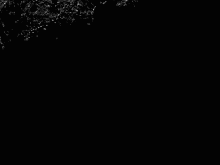Captured on Oct. 20 during the OSIRIS-REx mission’s sample collection event, this series of images shows the navigation camera’s (NavCam 2) field of view as the NASA spacecraft approaches, touches, and moves away from asteroid Bennu’s surface. The sampling event brought the spacecraft all the way down to sample site Nightingale, and the team on Earth received confirmation of successful touchdown at 6:08 pm EDT. Preliminary data show the sampling head touched Bennu’s surface for approximately 6 seconds, after which the spacecraft performed a back-away burn.
These images were captured over an approximate three-hour period – the imaging sequence begins approximately one hour after the orbit departure maneuver and ends approximately two minutes after the back-away burn. In the middle of the sequence, the spacecraft slews, or rotates, so that NavCam 2 looks away from Bennu, toward space. OSIRIS-REx then performs a final slew to point the camera (and the sampling arm) toward the surface again.
As the spacecraft nears site Nightingale, the sampling arm’s shadow comes into view in the lower part of the frame. Shortly after, the sampling head impacts site Nightingale (just outside the camera’s field of view to the upper right) and fires a nitrogen gas bottle, which mobilizes a substantial amount of the sample site’s material. Several seconds later, the spacecraft performs a back-away burn and the sampling arm’s shadow is visible against the disturbed surface material. The team continues to investigate what caused the extremely dark areas visible in the upper and middle parts of the frame. The upper area could be the edge of the depression created by the sampling arm, a strong shadow cast by material lofted from the surface, or some combination of the two. Similarly, the middle dark region that first appears in the lower left of the image could be a depression caused by one of the spacecraft thrusters as it fired, a shadow caused by lofted material, or a combination of both.
The sequence was created using 189 images taken by the spacecraft’s NavCam 2 camera. NavCam 2 captured images for the spacecraft’s Natural Feature Tracking (NFT) navigation system. The NFT system allowed the spacecraft to autonomously guide itself to Bennu’s surface by comparing real-time images with an onboard image catalog. During the sample collection event, the NavCam 2 camera continuously imaged Bennu’s surface so that the NFT system could update the spacecraft’s position and velocity relative to Bennu as it descended towards the targeted touchdown point.
NavCam 2, a panchromatic (black-and-white) imager, is one of three cameras comprising TAGCAMS (the Touch-and-Go Camera System), which is part of OSIRIS-REx’s guidance, navigation, and control system. TAGCAMS was designed, built and tested by Malin Space Science Systems; Lockheed Martin Space integrated TAGCAMS to the OSIRIS-REx spacecraft and operates TAGCAMS.



